The Searchers (film)
9.4 /10 1 Votes
100% Rotten Tomatoes Cinematography Winton Hoch Duration Language English | 8/10 IMDb 4/4 Roger Ebert Screenplay Frank Nugent Country United States | |||||||||||||||||||||||||||||||||
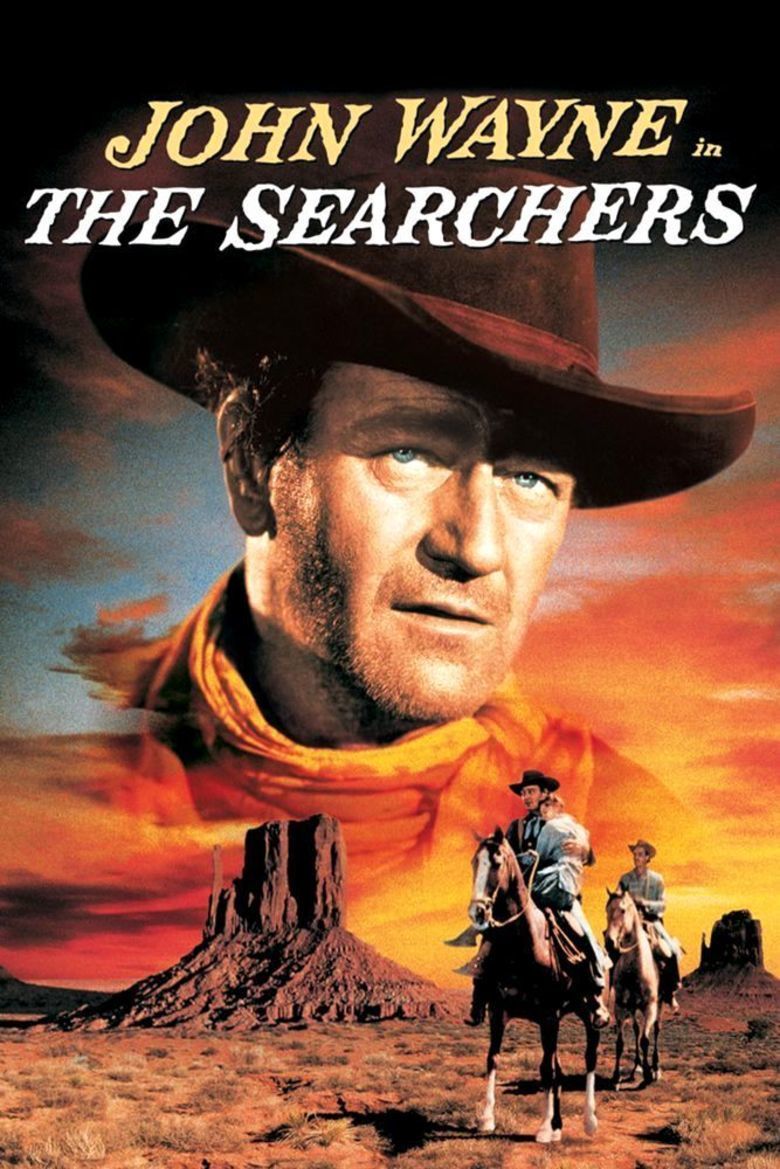 | ||||||||||||||||||||||||||||||||||
Release date March 13, 1956 (1956-03-13) Cast (Ethan Edwards), (Martin Pawley), (Laurie Jorgensen), (Debbie Edwards (older)), (Rev. Capt. Samuel Johnston Clayton), (Lars Jorgensen) Similar movies Shanghai Noon , Maverick , Geronimo: An American Legend , Cheyenne Autumn , Shalako , The Big Sky Tagline He had to find her... he had to find her... | ||||||||||||||||||||||||||||||||||
The searchers 1956 official trailer john wayne jeffrey hunter movie hd
The Searchers is a 1956 American Technicolor VistaVision Western film directed by John Ford, based on the 1954 novel by Alan Le May, set during the Texas–Indian Wars, and starring John Wayne as a middle-aged Civil War veteran who spends years looking for his abducted niece (Natalie Wood), accompanied by his adoptive nephew (Jeffrey Hunter). Critic Roger Ebert found Wayne's character, Ethan Edwards, "one of the most compelling characters Ford and Wayne ever created".
Contents
- The searchers 1956 official trailer john wayne jeffrey hunter movie hd
- The searchers 1956 theatrical trailer
- Plot
- Production
- Historical background
- Reception
- Later assessments
- Race relations
- Ethan and Martha
- Influence
- Comic book adaption
- References

The film was a commercial success. Since its release it has come to be considered a masterpiece and one of the greatest and most influential films ever made. It was named the greatest American western by the American Film Institute in 2008, and it placed 12th on the same organization's 2007 list of the 100 greatest American movies of all time. Entertainment Weekly also named it the best western. The British Film Institute's Sight & Sound magazine ranked it as the seventh best film of all time based on a 2012 international survey of film critics and in 2008, the French magazine Cahiers du Cinéma ranked The Searchers number 10 in their list of the 100 best films ever made.
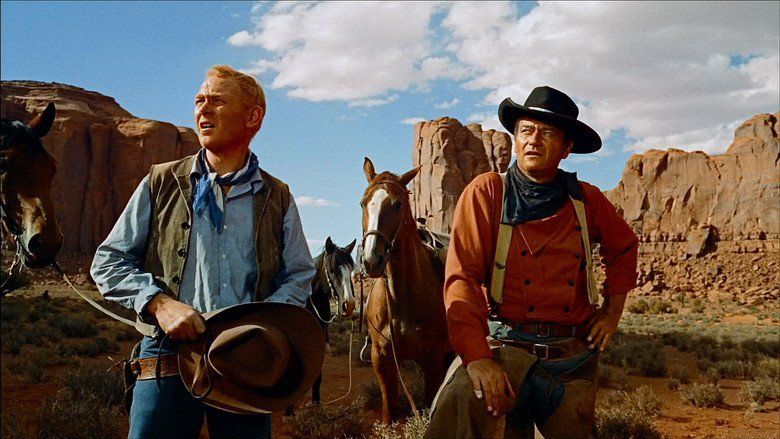
In 1989, The Searchers was deemed "culturally, historically, or aesthetically significant" by the United States Library of Congress, and selected for preservation in its National Film Registry; it was in the first cohort of films selected for the registry.
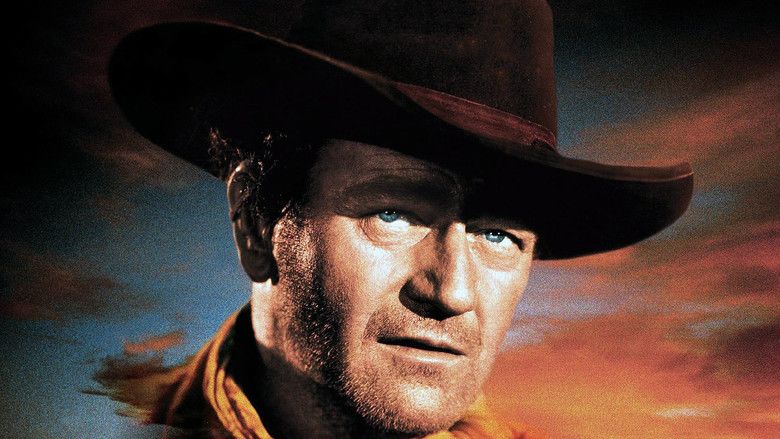
The Searchers was the first major movie to have a purpose-filmed making-of, requested by John Ford. It deals with most aspects of making the movie, including preparation of the site, construction of props, and filming techniques.
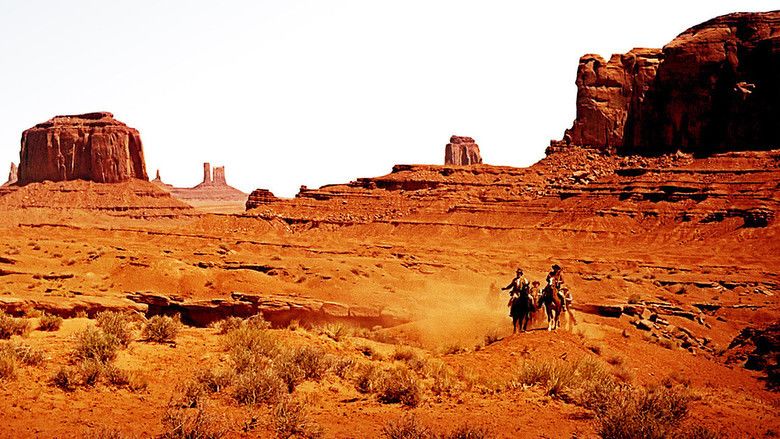
The searchers 1956 theatrical trailer
Plot
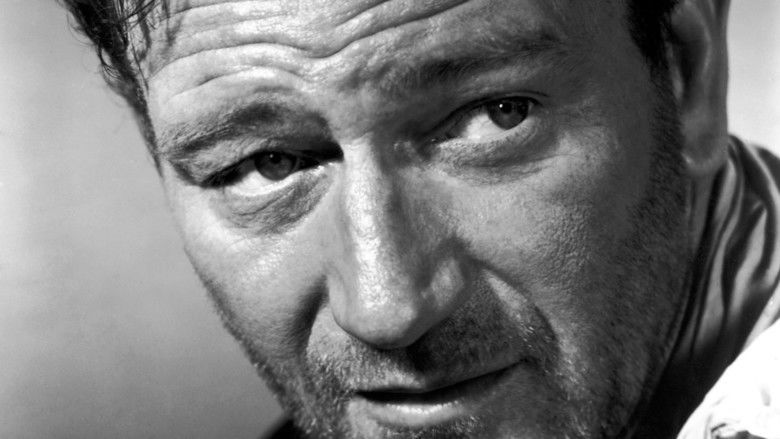
In 1868, Ethan Edwards returns after an eight-year absence to the home of his brother Aaron in the wilderness of West Texas. Ethan fought in the Civil War on the side of the Confederacy, and in the three years since that war ended he apparently fought in the Mexican revolutionary war as well. He has a large quantity of gold coins of uncertain origin in his possession, and a medal from the Mexican campaign that he gives to his eight-year-old niece, Debbie. As a former Confederate soldier, he is asked to take an oath of allegiance to the Texas Rangers; he refuses. As Rev. Captain Samuel Clayton remarks, Ethan "fits a lot of descriptions".
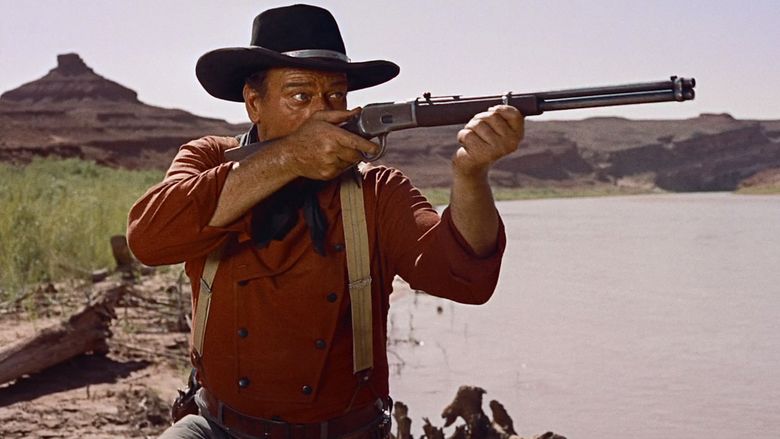
Shortly after Ethan's arrival, cattle belonging to his neighbor Lars Jorgensen are stolen, and when Captain Clayton leads Ethan and a group of Rangers to recover them, they discover that the theft was a Comanche ploy to draw the men away from their families. When they return they find the Edwards homestead in flames. Aaron, his wife Martha, and their son Ben are dead, and Debbie and her older sister Lucy have been abducted.
After a brief funeral the men set out in pursuit. They come upon a burial ground of Comanches who were killed during the raid. Ethan mutilates one of the bodies. When they find the Comanche camp, Ethan recommends a frontal attack, but Clayton insists on a stealth approach to avoid killing the hostages. The camp is deserted, and further along the trail the men ride into an ambush. Though they fend off the attack, the Rangers are left with too few men to fight the Indians effectively. They return home, leaving Ethan to continue his search for the girls with only Lucy's fiancé, Brad Jorgensen and Debbie's adopted brother, Martin Pawley. Ethan finds Lucy brutally murdered and presumably raped in a canyon near the Comanche camp. In a blind rage, Brad rides directly into the Indian camp and is killed.
When winter arrives Ethan and Martin lose the trail and return to the Jorgensen ranch. Martin is enthusiastically welcomed by the Jorgensens' daughter Laurie, and Ethan finds a letter waiting for him from a trader named Futterman, who claims to have information about Debbie. Ethan, who would rather travel alone, leaves without Martin the next morning, but Laurie provides Martin with a horse to catch up. At Futterman's trading post, Ethan and Martin learn that Debbie has been taken by Scar, the chief of the Nawyecka band of Comanches. A year or more later, Laurie receives a letter from Martin describing the ongoing search. In reading the letter aloud, Laurie narrates the next few scenes, in which Ethan kills Futterman for trying to steal his money, Martin accidentally buys a Comanche wife, and the two men find a portion of Scar's band killed by soldiers.
The search leads Ethan and Martin to a military fort, and then to New Mexico, where a Mexican man leads them to Scar. They find Debbie after five years, now an adolescent, living as one of Scar's wives. She tells the men that she has become a Comanche, and wishes to remain with them. Ethan would rather see her dead than living as an Indian, and tries to shoot her, but Martin shields her with his body and a Comanche wounds Ethan with an arrow as they escape. Though Martin tends to Ethan's wound, he is furious with him for attempting to kill Debbie, and wishes him dead. "That'll be the day," Ethan replies, as they return home.
Meanwhile, Charlie McCorry has been courting Laurie in Martin's absence. Ethan and Martin arrive home just as Charlie and Laurie's wedding is about to begin. After a fistfight between Martin and Charlie, a nervous "Yankee" soldier, Lt. Greenhill, arrives with news that Ethan's half-crazy friend Mose Harper has located Scar. Clayton leads his men to the Comanche camp, this time for a direct attack, but Martin is allowed to sneak in ahead of the assault to find Debbie, who welcomes him. Martin kills Scar during the battle, and Ethan scalps him. Ethan then locates Debbie, and pursues her on horseback. Martin fears that he will shoot her as he has promised; but instead he sweeps her up onto his saddle. "Let’s go home," he says. Debbie is reunited with her family, and Martin with Laurie. In an iconic closing scene, Ethan departs the homestead as he arrived—alone—clutching his arm, the cabin door slowly shutting on his receding image.
Production
The Searchers was the first production from "distinguished turfman" C.V. Whitney; it was directed by John Ford and distributed by Warner Brothers. While the film was primarily set in the staked plains (Llano Estacado) of Northwest Texas, it was actually filmed in Monument Valley, Arizona/Utah. Additional scenes were filmed in Mexican Hat, Utah, in Bronson Canyon in Griffith Park, Los Angeles, and in Alberta. The film was shot in the VistaVision widescreen process. Ford originally wanted to cast Fess Parker, whose performance as Davy Crockett on television had helped spark a national craze, in the Jeffrey Hunter role, but Walt Disney, to whom Parker was under contract, refused to allow it and didn't tell Parker about the offer, according to Parker's videotaped interview for the Archive of American Television. Parker has said retrospectively that this was easily his worst career reversal.
As part of its promotion of The Searchers, in 1956 Warner Bros. produced and broadcast one of the very first behind-the-scenes, "making-of" programs in movie history, which aired as an episode of its Warner Bros. Presents TV series.
The Searchers is the first of only three films produced by Cornelius Vanderbilt Whitney's C. V. Whitney Pictures; the second was The Missouri Traveler in 1958 with Brandon deWilde and Lee Marvin, and the last was The Young Land in 1959 with Wayne's son Patrick Wayne and Dennis Hopper.
Historical background
Several film critics have suggested that The Searchers was inspired by the 1836 kidnapping of nine-year-old Cynthia Ann Parker by Comanche warriors who raided her family's home at Fort Parker, Texas. She spent 24 years with the Comanches, married a war chief, and had three children (one of whom was the famous Comanche Chief Quanah Parker), only to be rescued against her will by Texas Rangers. James W. Parker, Cynthia Ann's uncle, spent much of his life and fortune in what became an obsessive search for his niece, like Ethan Edwards in the film. In addition, the rescue of Cynthia Ann, during a Texas Ranger attack known as the Battle of Pease River, resembles the rescue of Debbie Edwards when the Texas Rangers attack Scar's village. Parker's story was only one of 64 real-life cases of 19th-century child abductions in Texas that author Alan Le May studied while researching the novel on which the film was based. His surviving research notes indicate that the two characters who go in search of a missing girl were inspired by Brit Johnson, who ransomed his captured wife and children from the Comanches in 1865. Afterward, Johnson made at least three trips to Indian Territory and Kansas relentlessly searching for another kidnapped girl, Millie Durgan (or Durkin), until Kiowa raiders killed him in 1871.
The ending of Le May's novel contrasts to the film's, with Debbie, called Dry-Grass-Hair by the Comanches, running from the white men and from the Indians. Marty, in one final leg of his search, finds her days later, only after she has fainted from exhaustion.
In the film, Scar's Comanche group is referred to as the Nawyecka, correctly the Noyʉhka or Nokoni, the same band that kidnapped Cynthia Ann Parker. Some film critics have speculated that the historical model for the cavalry attack on a Comanche village, resulting in Look's death and the taking of Comanche prisoners to a military post, was the well-known Battle of Washita River, November 27, 1868, when Lt. Col. George Armstrong Custer's 7th U.S. Cavalry attacked Black Kettle's Cheyenne camp on the Washita River (near present-day Cheyenne, Oklahoma). The sequence also resembles the 1872 Battle of the North Fork of the Red River, in which the 4th Cavalry captured 124 Comanche women and children and imprisoned them at Fort Concho.
Reception
Upon the film's release, Bosley Crowther called it a "ripsnorting Western" (in spite of the "excessive language in its ads"); he credits Ford's "familiar corps of actors, writers, etc., [who help] to give the gusto to this film. From Frank S. Nugent, whose screenplay from the novel of Alan LeMay is a pungent thing, right on through the cast and technicians, it is the honest achievement of a well-knit team." Crowther noted "two faults of minor moment":
Variety called it "handsomely mounted and in the tradition of Shane", yet "somewhat disappointing" due to its length and repetitiveness; "The John Ford directorial stamp is unmistakable. It concentrates on the characters and establishes a definite mood. It's not sufficient, however, to overcome many of the weaknesses of the story."
The New York Herald Tribune termed the movie “distinguished”; Newsweek deemed it “remarkable.” Look described The Searchers as a “Homeric odyssey.” The New York Times praised Wayne’s performance as “uncommonly commanding.”
The film earned rentals of $4.8 million in the US and Canada during its first year of release.
Later assessments
The Searchers has been cited as one of the greatest films of all time, such as in the BFI's decennial Sight & Sound polls. In 1972, The Searchers was ranked 18th; in 1992, fifth; in 2002, 11th; in 2012, 7th. In a 1959 Cahiers du Cinema essay, Godard compared the movie's ending with that of the reuniting of Odysseus with Telemachus in Homer's Odyssey. In 1963, he ranked The Searchers as the fourth-greatest American movie of the sound era, after Scarface (1932), The Great Dictator (1940), and Vertigo (1958). The 2007 American Film Institute 100 greatest American films list ranked The Searchers in 12th place. In 1998, TV Guide ranked it 18th. In 2008, the American Film Institute named The Searchers as the greatest Western of all time. In 2010, Richard Corliss noted the film was "now widely regarded as the greatest western of the 1950s, the genre's greatest decade" and characterized it as a "darkly profound study of obsession, racism and heroic solitude." The film also maintains a perfect 100% rating on review aggregator, Rotten Tomatoes.
The film has been recognized multiple times by the American Film Institute:
On "They Shoot Pictures Don't They," a site which numerically calculates critical reception for any given film, The Searchers has been recognized as the ninth most acclaimed movie ever made. Members of the Western Writers of America chose its title song as one of the top 100 Western songs of all time.
Scott McGee noted that "...more than just making a social statement like other Westerns of the period were apt to do, Ford instills in The Searchers a visual poetry and a sense of melancholy that is rare in American films and rarer still to Westerns.
Glenn Frankel's 2013 study of the film calls it "the greatest Hollywood film that few people have seen."
Race relations
A major theme of the film is the historical attitude of white settlers toward Native Americans. Ford was not the first to attempt this examination cinematically, but his depiction of harshness toward Native Americans was startling, particularly to later generations of viewers; Roger Ebert wrote, "I think Ford was trying, imperfectly, even nervously, to depict racism that justified genocide." At the heart of The Searchers is Wayne’s performance as the angry, vengeful Ethan Edwards. From the beginning of his quest, it is clear that he is less interested in rescuing Debbie than in wreaking vengeance on the Comanches for the slaughter of his brother’s family.
In a 1964 interview with Cosmopolitan magazine, Ford said,
There's some merit to the charge that the Indian hasn't been portrayed accurately or fairly in the Western, but again, this charge has been a broad generalization and often unfair. The Indian didn't welcome the white man ... and he wasn't diplomatic ... If he has been treated unfairly by whites in films, that, unfortunately, was often the case in real life. There was much racial prejudice in the West.
Film scholar Ed Lowry writes that "[W]hile the Comanches are depicted as utterly ruthless, Ford ascribes motivations for their actions, and lends them a dignity befitting a proud civilization. Never do we see the Indians commit atrocities more appalling than those perpetrated by the white man. “Wayne is plainly Ahab,” wrote cultural critic Greil Marcus, “He is the good American hero driving himself past all known limits and into madness, his commitment to honor and decency burned down to a core of vengeance.” For Brenton Priestley, Ford indicates that Scar's cruelty is also motivated by revenge ("Two sons killed by white men. For each son, I take many... scalps.").
The theme of miscegenation also runs through the film. Early on, Martin earns a sour look from Ethan when he admits to being one eighth Cherokee. Ethan says repeatedly that he will kill his niece rather than have her live "with a buck", that "living with the Comanche ain't living". Even one of the film's gentler characters, Vera Miles's Laurie, tells Martin when he explains he must protect his adoptive sister, that "Ethan will put a bullet in her brain. I tell you Martha would want him to." This outburst makes it clear that even the supposedly gentler characters hold the same fear of miscegenation.
The rape of captive white women by the Comanche is an unspoken theme. There is no actual rape scene but Alexandra Heller-Nicholas in her study of Rape-Revenge Films says, "the abduction, captivity and implied rape of Debbie (Natalie Wood) ...drives the narrative"; and Edward Buscombe points out a scene in which "...[Ethan] turns off the trail to penetrate a narrow crevice in the rocks, and when he emerges his savage stabbing with his knife seems to mimic a violent sexual act, drawing us 'a picture' of the act of rape which obsesses him." Glenn Frankel writes that in real life, "Rape was a fact of life for many captives, although it was seldom discussed by those women who escaped or were ransomed back to the white world."
Ethan and Martha
An important plot undercurrent is the obvious mutual attraction between Ethan Edwards and his brother's wife, Martha. Though no dialog alludes to it, there are a multitude of visual references to their relationship throughout the film. Some critics have suggested that this unspoken passion implies that Debbie—who is specifically described as eight years old, as Ethan returns from an eight-year absence—may be Ethan's daughter. Such a situation would add further layers of nuance to Ethan's obsessive search for Debbie, his revulsion at the thought that she might be living as an Indian, and his ultimate decision to bring her home—and then walk away. Beyond the ostensible motivations, it might depict a guilt-ridden father's need to save the daughter he made by cuckolding his brother, then abandoned.
Influence
The Searchers has influenced many films. David Lean watched the film repeatedly while preparing for Lawrence of Arabia to help him get a sense of how to shoot a landscape. The entrance of Ethan Edwards in The Searchers, across a vast prairie, is echoed in the across-the-desert entrance of Sherif Ali in Lawrence of Arabia. Sam Peckinpah referenced the aftermath of the massacre and the funeral scene in Major Dundee (1965) and, according to a 1974 review by Jay Cocks, Peckinpah's Bring Me the Head of Alfredo Garcia contains dialogue with "direct tributes to such classics as John Huston's The Treasure of the Sierra Madre and John Ford's The Searchers."
Martin Scorsese's 1967 film Who's That Knocking at My Door features a sequence in which the two primary characters discuss The Searchers. In 2012, in a Sight & Sound poll, Scorsese listed The Searchers as one of his all-time favorite films.
Scott McGee, writing for Turner Classic Movies, notes "Steven Spielberg, Martin Scorsese, John Milius, Paul Schrader, Wim Wenders, Jean-Luc Godard, and George Lucas have all been influenced and paid some form of homage to The Searchers in their work." Wenders' Palme d'Or-winning 1984 film Paris, Texas in particular has been cited for similarities.
The film influenced several aspects of George Lucas' film saga Star Wars. The scene in which Ethan Edwards discovers the flaming wreckage of his family homestead is reflected in 1977's Star Wars, wherein the character Luke Skywalker finds that his homestead has been burned and destroyed by Imperial Stormtroopers. The Searchers was also an influence on the 2002 prequel film in the series, Star Wars: Episode II – Attack of the Clones. In the film, Anakin Skywalker learns that one of his family members has been abducted by a group of Tusken Raiders (though it is the character's mother who is kidnapped, rather than a niece). Anakin massacres the kidnappers in vengeance, much like The Searchers' climactic battle in the Comanche camp.
The film served as the inspiration for the name of the British band The Searchers.
Breaking Bad creator Vince Gilligan stated that the ending to the show's final episode, "Felina", was influenced by the film.
The 2016 Canadian film Searchers is a partial remake of the film, in which an Inuit man in 1913 finds his wife and daughter has been kidnapped. However, co-director Zacharias Kunuk discarded the original's plot about conflicts between white people and indigenous peoples, instead using only Inuit characters. Kunuk explained racism was not an intended theme of his film. Kunuk said he watched western films in the Igloolik community hall as a boy, and declared The Searchers star John Wayne "was our hero."
Comic book adaption
References
The Searchers WikipediaThe Searchers (film) IMDbThe Searchers (film) Rotten TomatoesThe Searchers (film) Roger EbertThe Searchers (film) themoviedb.org
